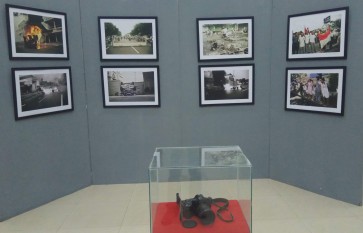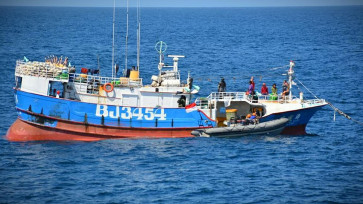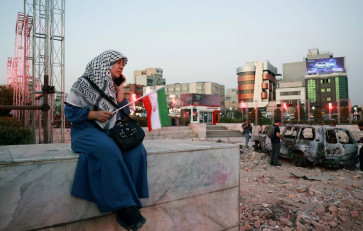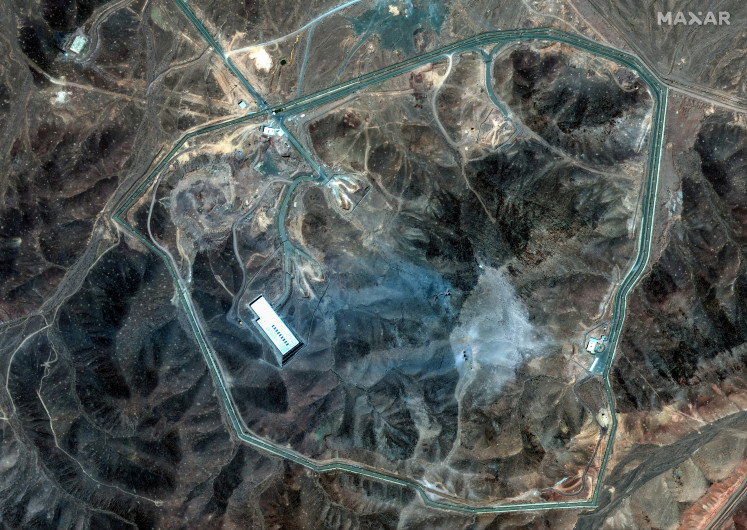Popular Reads
Top Results
Can't find what you're looking for?
View all search resultsPopular Reads
Top Results
Can't find what you're looking for?
View all search resultsBook delves into intrigues, surprises in a slice of Chinese-Javanese history
At the launch of Daradjadi's Perang Sepanjang 1740 - 1743 Tionghoa -Jawa Lawan VOC, held late November last year at the Universitas Indonesia campus in Depok, the author's *hidden motivation' behind bringing out this volume, featuring the curious co-operation of Chinese and Javanese people came into question
Change text size
Gift Premium Articles
to Anyone

At the launch of Daradjadi's Perang Sepanjang 1740 - 1743 Tionghoa -Jawa Lawan VOC, held late November last year at the Universitas Indonesia campus in Depok, the author's *hidden motivation' behind bringing out this volume, featuring the curious co-operation of Chinese and Javanese people came into question.
Unwittingly perhaps, the speaker revealed a mindset that was prevalent in the New Order era, where behind any fa*ade lurked a bigger, usually quite opaque picture that was the source of hushed, yet lively speculation. It is interesting to note that this was particularly common when ethnic Chinese people were concerned.
After reading Perang Sepanjang 1740 - 1743 (Sepanjang was the nickname given to the commander of the Chinese troops), it becomes clear though that, far from having a hidden agenda, Daradjadi intention was to shed light on what brought the Chinese and Javanese together to fight against the Dutch East India Company (VOC).
The war itself has been mentioned and recounted in varying degrees of detail by a number of books on Indonesian and, more specifically, Javanese history, but Daradjadi has successfully presented a very readable account.
The reader gains deeper understanding of the social and political developments which drove those involved to actions thought impossible, and, if pondered logically, perhaps even futile.
The book does not immediately hone in on the main event - the war - but first paints the backdrop surrounding it. The reader is given a reasonable preview into the workings, intrigues and power-plays of the Javanese courts, followed by what is perceived as the core motivations of the VOC and how these drove the Company's interactions with the local rulers.
Once this is established, an idea is given of what life for Chinese people in Indonesia was like at the time. The main occupations and preoccupations of the Chinese migrant communities, their social dovetailing with the Javanese - rulers as well as commoners - the treatment they received from the VOC and their reactions to it are discussed.
While both the VOC and the immigrant Chinese wanted to trade, they had very different ways of going about it. In brief, the Chinese worked hard and seized market opportunities, while the VOC used military might to assure profit.
Unlike the VOC, the Chinese did not pose any threat to the Javanese ruler's position of power. In fact, they were quite useful, as they made the economy active and paid tax to them.
The VOC on the other hand, with its territorial ambition, was another story. The Javanese rulers, however, sought to utilize the VOC's sophisticated military force to keep their vassals from taking power from them, so they refrained from making enemies with the VOC.
Unfortunately, as time passed, they became increasingly aware of their own vulnerability to the might of the VOC's. It became obvious that they were no match for the VOC's naturally aggressive modus operandi; they watched with alarm as their territories fell, piece by piece.
The book then details the events that lead up to the rebellion of the Chinese immigrants in Batavia, where the VOC's head office was situated. This was followed by a horrific massacre of the Chinese in 1740.
In 1740, Batavia was hit by economic slow-down, yet, despite legal mechanisms imposed by the VOC, it was unable to stem the flow of immigrants from China. They landed on coasts un-supervised by the VOC and entered the city illegally by paying incredibly high bribes to corrupt officials.
Not only did the slow-down hit the working class hard, many well-off Chinese businesses also went bankrupt. Those involved in the sugar industry, for example, were at the mercy of the VOC, the only authorized sugar buyer, who set a rock-bottom price for the commodity.
At the same time, extortion of the Chinese went on across the board. The VOC arbitrarily increased taxes and tolls at will, squeezing them dry and driving them to a corner where the only way out was to fight back.
It was a hopelessly unequal battle, the VOC troops had sophisticated arms while the Chinese made do with improvised weapons. Within a short time the Chinese were as good as deci-mated.
However the leader of the Chinese rebels, known as Captain Sepanjang, escaped death with a number of his followers. They retreated and arrived at Kartasura, the seat of power of the Mataram Kingdom's, at just the right time.
King Pakubuwana II and his prime minister, Notokusumo, had their hands tied behind their backs and watched helplessly as their territorial power diminished. The VOC needed the cooperation of rulers who had so far been the vassals of Mataram, and pledged to help them defy the Mataram king.
The news of the Chinese fomenting rebellion against the local VOC was at first met with little more than indifference by the Dutch and Mataram's power elite.
None believed that the Chinese had it in their psyche or were brave enough to organize themselves into a rebellion, especially against such a formidable foe as the VOC. However, mysti-cism came into play.
The king arranged a fight between a lion he received as a gift from a Dutch high official, and two Javanese bulls. He watched incredulously as the bulls, which he believed were symbols of Javanese power, beat the lion. With subtle prompting from Notokusumo, who disliked the VOC, Pakubuwana II was finally convinced that Mataram should cooperate with the Chinese and try to chase away the militaristic Dutch East Indies Company once and for all.
The central theme of the book, the war itself, is full of subplots and surprises, making it a compelling read. Without revealing too much Perang Sepanjang 1740 - 1743 Tionghoa - Jawa Lawan VOC is enlightening as well as entertaining.
PERANG SEPANJANG 1740 - 1743 TIONGHOA-JAWA LAWAN VOC By Daradjadi Published by Pelangi Nusantara, Jakarta, November 2008 Paperback, 268pages









